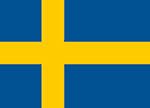“Without error there can be no brilliancy” ― Emanuel Lasker
Emanuel Lasker is the second world champion (1894-1921) carried this longer than anyone else in history i.e. for 27 years. A German chess master was also known as mathematician & philosopher. He paved a financial secure path for upcoming chess players and motivated many to consider chess as a principal career. Lasker, contributed his knowledge for the development of other games like bridge & being a research mathematician – in commutative algebra. His learning habit motivated him to study Philosophy which later resulted in the form of books. His teaching & writing were exceptional examples of combination of three – chess, philosophy and mathematics.
Childhood & Early Life
Emanuel Lasker was born in he Neumark Germany (now in Poland), on December 24, 1868 at Jewish cantor family. He was sent to Berlin to study mathematics at the age of eleven. There he lived with his eight years elder brother Berthold. According to source Berthold was among the world’s top chess player in the early 1890’s. Little Emanual got his first chess training from his brother, later he use this knowledge to supplement their income by playing chess and card games at the Café Kaiserhof. In 1890’s.
Career
Only in the next five years he won the world chess championship from Wilhelm Steinitz. In his early career as a chess player he witnessed remarkable events, like finishing third in Graz, sharing first prize with his brother Berthold in a Berlin tournament, and winning two games in London & three in New York. Along with his active career in chess, in 1902 he managed to receive his doctorate in mathematics from the University of Erlangen-Nürnberg, Germany. His most significant mathematical article, in 1905, was the base of fundamental importance to modern algebra and algebraic geometry.
In 1904 Lasker published, Lasker’s Chess Magazine, for four years and won against the top masters & came back to a chess career. He just not defeated world’s first grand champion Mr. Steinetzin 1894 but from 1896 – 1897.He also played and won against Frank Marshall in 1907, Siegbert Tarrasch in 1908, and separate contests against Carl Schlecter and Dawid Janowski in 1910. In 1921 after World War I, his championship title was finally taken from him by José Raúl Capablanca. After that he continued to play successfully through 1925, when he retired. At his 60s living in the USSR, after exiled from Nazi-occupied Germany & confiscated his property. Finally he flees to the U.S. During this misfortune period yet he still managed impressive results.
He developed new endgame concepts and then retired for some years to study philosophy and to teach and write. One can see best use of consciousness into his play, Lasker is considered by modern analysts to have had a style ahead of his time, as many of his moves that his contemporaries considered mysterious are now commonplace. Although playing before the use of statistical rankings, modern analysis regularly places Lasker in the top ten players of all time.

He was also a first-class contract bridge player and wrote about bridge and other games, comprising Go and his own invention, Lasca. He was creative teacher and writer. He was author of several books and magazines. Lasker’s Manual of Chess, Common Sense in Chess, The International Chess Congress, St. Petersburg, 1909, Struggle,How to Play Chess, Lasker’s Chess Primer these are some of his best works.
Lasker was a good friend of Albert Einstein, who wrote the introduction to some of his books. He died in New York on January 11, 1941, at the age of 72.
Notable Games:
- Marshall vs Lasker, 1907 0-1
- Lasker vs W Napier, 1904 1-0
- Euwe vs Lasker, 1934 0-1
- Lasker vs Schlechter, 1910 1-0
- Lasker vs Capablanca, 1935 1-0
- Lasker vs Pirc, 1935 1-0
- Lasker vs Steinitz, 1894 1-0
Sources:
https://kids.kiddle.co/Emanuel_Lasker#Early_years_1868.E2.80.931894
https://www.britannica.com/biography/Emanuel-Lasker
http://www.jewage.org/wiki/ru/Article:Emanuel_Lasker_-_Biography
































